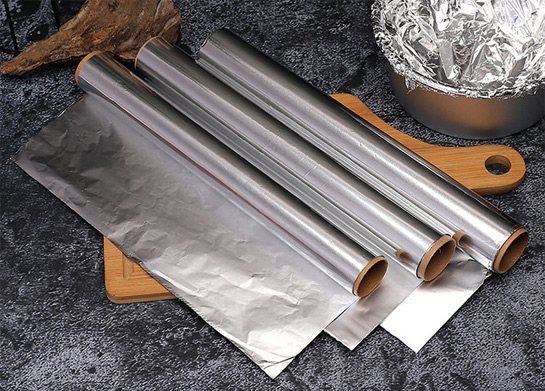Foil And Packaging
- Home
- Foil & Packaging

Quick Read
The origin of aluminum foil can be traced by to the early 1900s. Life Savers-one of today’s most popular candies—were first packaged in foil in 1913. To this day, the treats are encased in the world-famous aluminum foil tube. The uses of foil have grown over the past 100 years to a nearly endless count. From Christmas tree ornaments to spacecraft insulation, TV dinners to medicine packets—aluminum foil has, in many ways, improved both our products and our lives.
Take-Away Facts
An early commercial use of aluminum foil – One of the first commercial uses of aluminum foil came in 1913. Foil leg bands were used to identify racing pigeons.
Innovative consumer product delivery – Jiffy Pop Popcorn, released in 1959, combined a heavy-gauge foil pan and an expandable, light-gauge foil cover to deliver their “magic treat.”
Effective for energy conservation – The “shiny” side of aluminum foil is 88 percent reflective, making it one of the best and most efficient insulators to solar heat.
Billions of containers are produced each year – Approximately 7 billion aluminum foil containers are produced annually. This production rate nets to 220 containers produced every second.
How aluminum foil is made
Aluminum foil is produced by rolling aluminum slabs cast from molten aluminum in a rolling mill to the desired thickness. To maintain a constant thickness, a technician monitors the rolling mill sensors to ensure the pressure on the slab is correct. Sensors are able to tell the technician if the pressure is too great or not enough and then the technician can adjust the rollers to apply more or less pressure. It is then coiled and sent to the cold rolling mill. To avoid breakage because of the thinness, the foil is doubled in the cold rolling mill and the rolled to the desired thickness. Aluminum foil provides a complete barrier to light, oxygen, moisture and bacteria. For this reason, foil is used extensively in food and pharmaceutical packaging. It is also used to make aseptic packaging that enables storage of perishable goods without refrigeration.
Growth of the aluminum foil and packaging market
The first pre-formed, all-foil food packaging containers appeared on the market in 1948. This grew into the complete line of die-formed and air-formed foil containers now sold in every supermarket. A spectacular period of growth occurred in the 1950s and 1960s. TV dinners, packed in compartmental trays, began to reshape the food products market. Packaging foil is now divided into three major categories: household/institutional foil, semirigid foil containers and flexible packaging. For decades, the use of foil has grown steadily in each of these categories.

Why Foil Is Shiny on One Side
Aluminum foil has a shiny side and a matte side. The shiny side is produced when the aluminum is rolled during the final pass. It is difficult to produce rollers with a gap fine enough to roll a single sheet of foil. For the final pass, two sheets are rolled at the same time, doubling the thickness of the roll. When the sheets are later separated, the two inside surfaces are matte, and the two outside surfaces are shiny.
